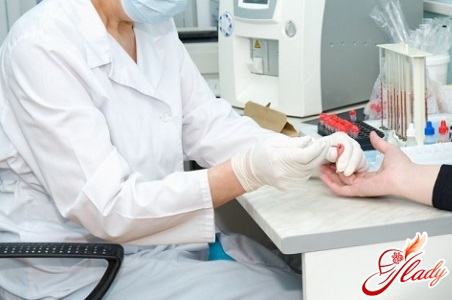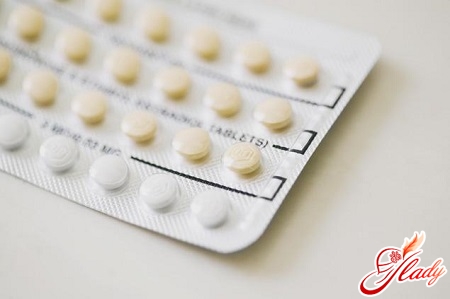
In the life of every woman of a certain age(from 40 to 58 years, depending on the characteristics of her body) a period begins during which hormonal changes occur in the reproductive system. As a result of this change, women's reproductive function first stops working, and later menstruation disappears. This difficult period is called menopause. Many representatives of the fair sex feel unwell during menopause: their blood pressure jumps, they suffer from constant hot flashes, their mood worsens. Another unpleasant thing that happens at this time is uterine bleeding. A large number of women are convinced that bleeding during menopause is a normal and completely natural thing that does not require focusing on it. However, in fact, this is not so. Bleeding can occur during menopause for various reasons and often indicates some problems and dangers in the female body. Why does uterine bleeding occur during this period, what does it indicate, and how should it be dealt with?

Causes and types of abnormal blood loss
These phenomena, which are pathological in nature,occur in the first period of menopause - premenopause (before menopause) - and can appear after the cessation of menstruation (in postmenopause). Uterine bleeding appears for various reasons, depending on which 4 of their types can be distinguished.
In addition to the various reasons that contributethe appearance of uterine bleeding, the blood loss itself, depending on the intensity and duration, also comes in several types, for which special names are used. Thus, menorrhagia is the longest (over 7 days) and most abundant (more than 80 ml) bleeding that occurs regularly in women during menopause. But menometrorrhagia is usually called abundant or prolonged irregular blood loss. Polymenorrhea is considered regular bleeding, the interval between which is less than 21 days. Metrorrhagia is frequent and irregular light bleeding. All these blood losses occur more often depending on the climatic period of the woman. For example, during the premenopause, menometrorrhagia predominates among bleeding, and when menopause has already begun - metrorrhagia.
Normal and abnormal menstruation in premenopause
Already in the first menopause -premenopause - a woman should pay attention to the nature of menstruation and the duration of the cycle. At this time, the discharge can be of varying intensity: from the most scanty to abundant. The duration of the cycles also fluctuates. Menstruation may be absent for 2-3 months, then become regular again. The reasons for such changes are a decrease in the frequency of ovulation and fluctuations in hormonal levels. These reasons contribute to the growth of the endometrial layer and affect the nature of the menstrual cycle. Doctors consider these changes to be normal phenomena of premenopause. There are, however, a number of signs, having noticed which, a woman should immediately contact a gynecologist, since we are talking about pathologies. What should be a cause for concern?
The presence of such signs can be caused by completely different reasons, which are worth considering in more detail.
Causes of abnormal bleeding during premenopause

About the causes of bleeding during the postmenopause
During the postmenopausal period, the menstrual cyclewomen stops. Normally, bleeding similar to menstruation (painless, lasting only 3-4 days) can occur when taking medications that contain the hormones progesterone and estrogens. Other cases of bloody discharge indicate diseases. These can be submucous myoma, endometrial polyps, cervicitis, ovarian tumors and atrophic vaginitis. More serious diseases can be oncological problems, such as cervical cancer. According to statistics, 5 to 10% of women suffer from endometrial cancer during this period. If bloody discharge appears that is not associated with taking hormonal pills, women in the postmenopausal period must definitely see a gynecologist.
Methods of diagnosing diseases in uterine bleeding
Since bleeding in women can besymptoms of various diseases, it is not so easy to determine their causes. Diagnostics includes a whole range of activities and tests. Everything begins at an appointment with a gynecologist, who during an examination can assess the intensity and nature of the discharge, determine whether they are uterine, or bleeding from completely different organs. A gynecologist is able to identify one of the 4 types of bleeding described above. Then, to clarify the nature of uterine bleeding during menopause, women must undergo clinical and laboratory examinations. The complex of examinations includes such actions as:
- collection of anamnesis from the attending physician and analysis of the nature of the menograms (drawing of bloody discharge schedules);
- detection of the level of the hormone β-hCG;
- biochemical and clinical blood tests;
- research of the system of blood circulation;
- transvaginal ultrasound;
- MRI of pelvic organs;
- hormonal studies;
- A smear on oncocytology from the cervix;
- endometrial biopsy and hysteroscopy.
Diagnostic curettage is performedendometrium and its morphological studies. As a result of such studies, doctors can establish an accurate diagnosis in a fairly short period of time and immediately begin treating the diseases detected.
How are women's bleeding treated during the menopause?
After establishing a diagnosis, the doctor prescribes treatment.If the causes of uterine bleeding are dysfunctional, that is, the hormonal balance is disturbed, then the main method of treatment is taking hormonal drugs that contain analogues of female sex hormones. This method is called hormone replacement therapy. It should be remembered that the drugs must be taken strictly according to the scheme prescribed by the doctor, otherwise, as a result of improper intake of hormones, uterine bleeding may occur again. Sometimes, hemostatic drugs are prescribed to prevent heavy discharge. To compensate for blood loss, doctors prescribe infusion therapy as a treatment. If a woman suddenly experiences heavy blood loss during menopause, it can provoke severe anemia or hemorrhagic shock. In this case, emergency medical care is required, which can only be provided in a hospital. If the pathology is intrauterine, for example, endometrial hyperplasia, then hysteroscopy and ablation are performed - curettage of the uterine cavity. In other serious cases, surgical intervention is also required. If a polyp bleeds, then an endoscopic operation is prescribed - resectoscopy. With its help, the polyp is removed through the cervix. If several fibroids are detected, the uterus can be removed by performing a hysterectomy. If the disease is oncological, the woman continues treatment with an oncologist. In this case, in addition to surgical operations, the treatment regimen includes radiation therapy and chemotherapy. Every woman who has entered menopause should carefully monitor the health of her reproductive and genitourinary systems. Once every 6 months, you should undergo an examination by a gynecologist, and if the above symptoms occur, immediately consult a doctor. Only timely assistance will contribute to rapid treatment and final relief from serious ailments, because there are no preventive measures to prevent uterine bleeding.









